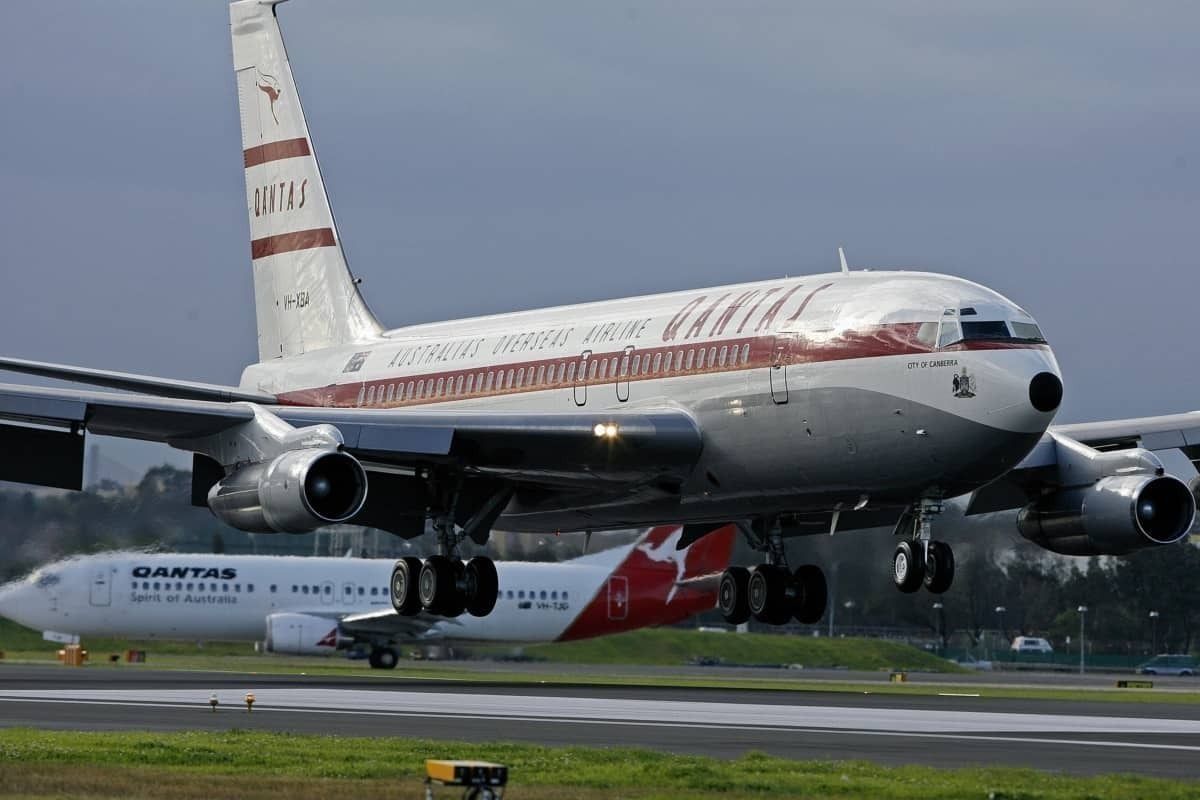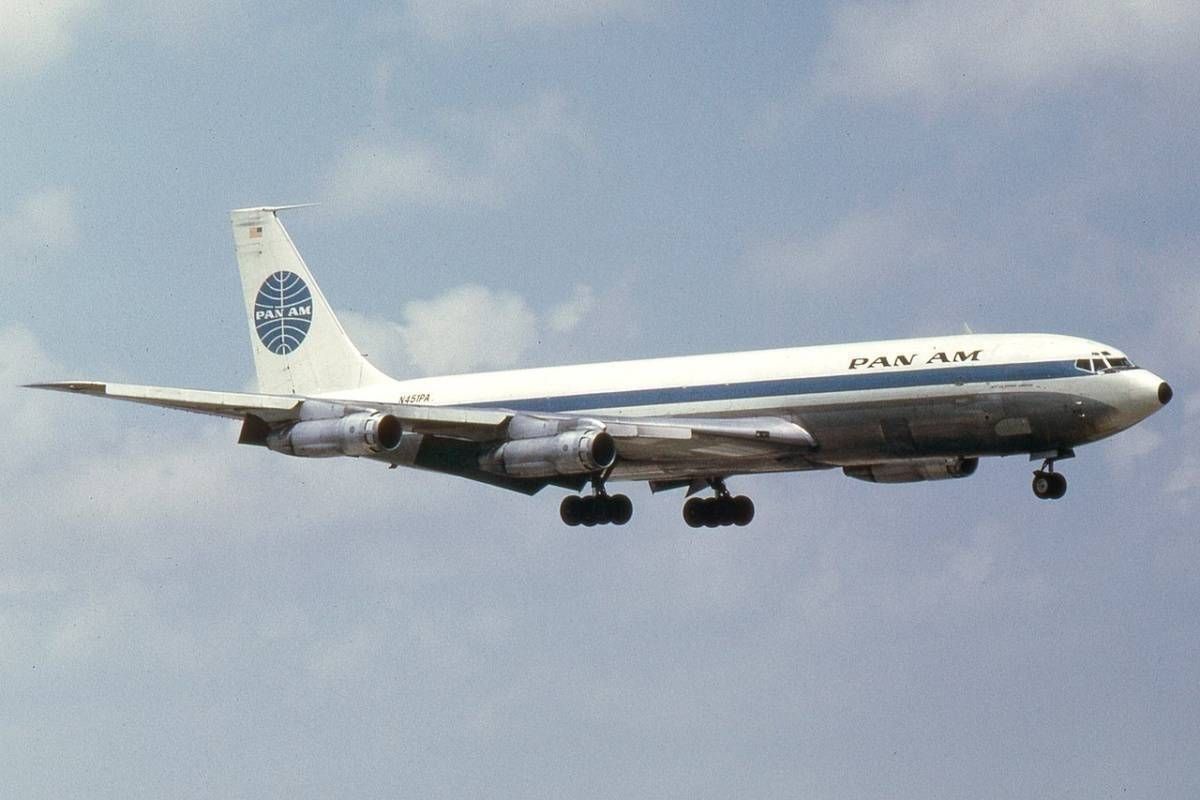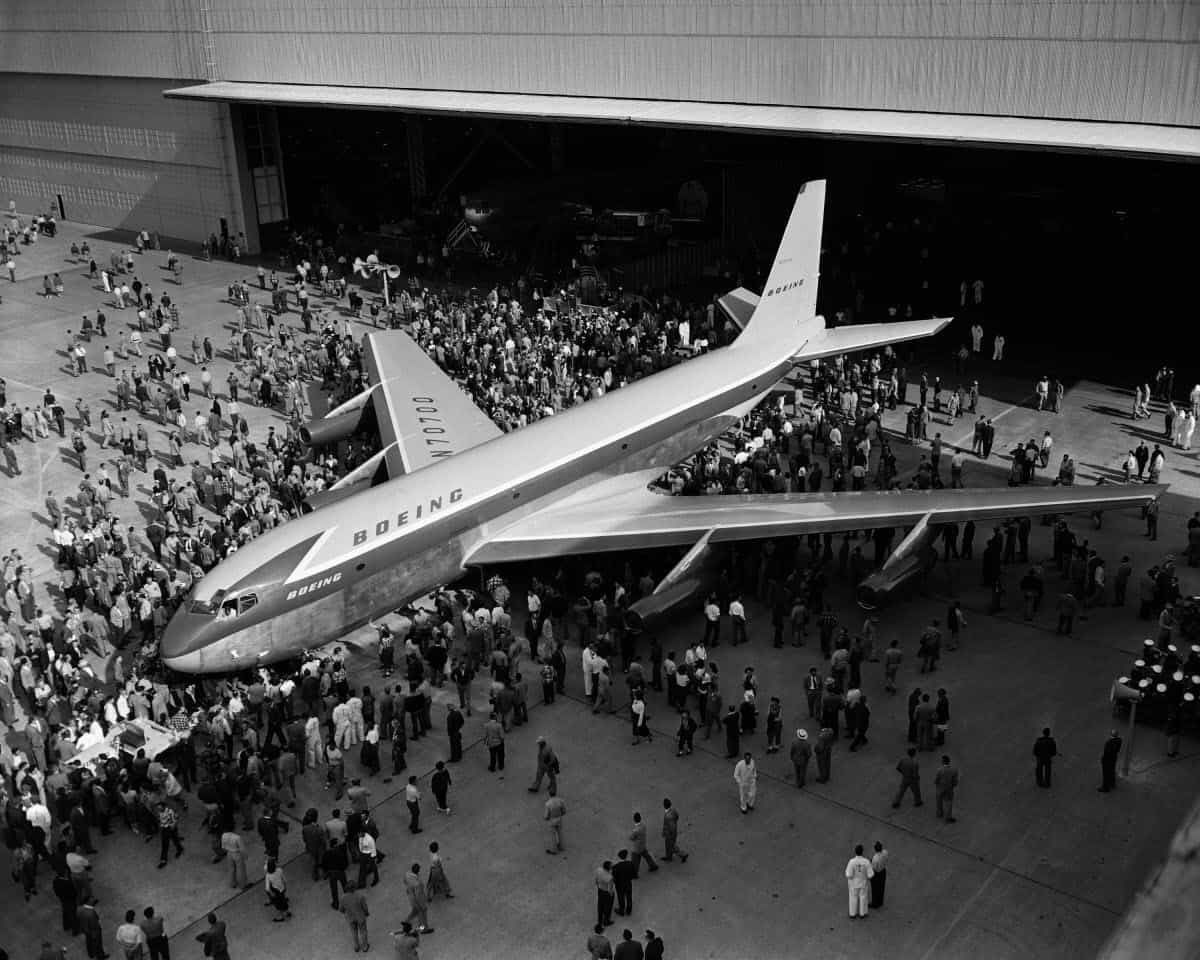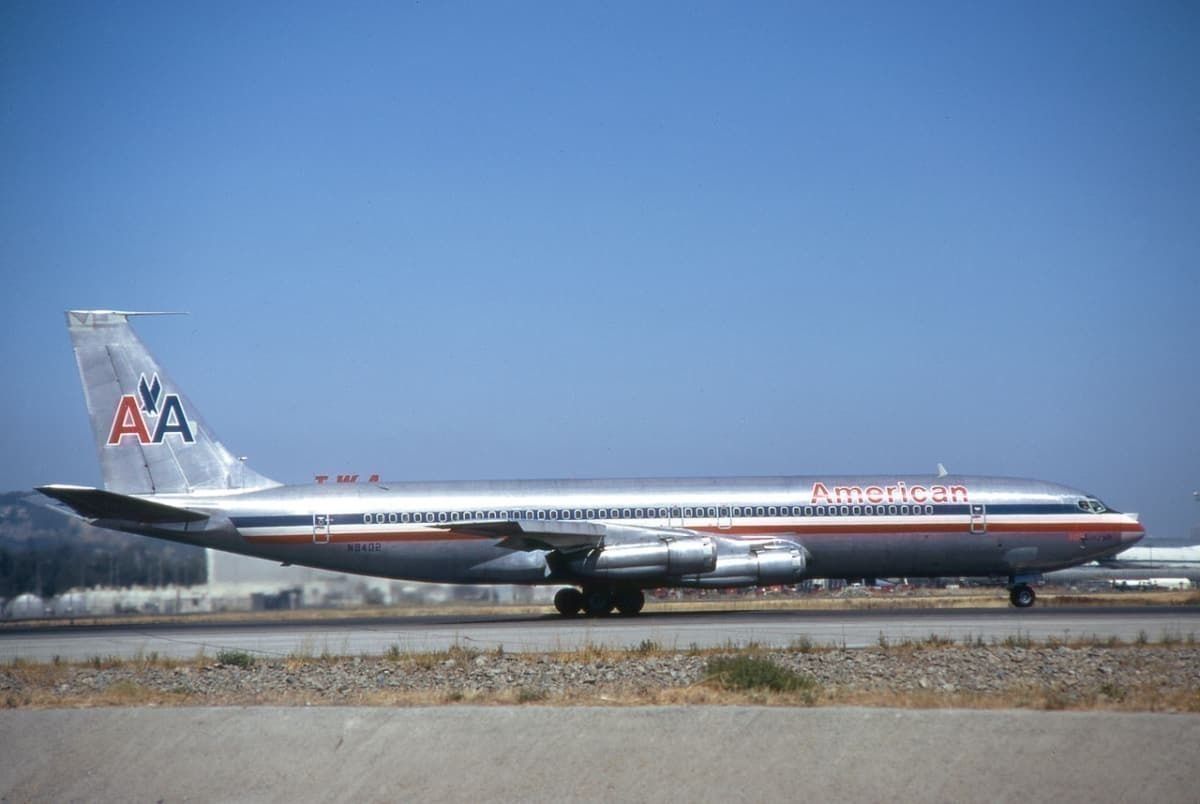Following World War II, Boeing military aircraft were second to none, yet the company's commercial aviation arm struggled. Douglas had its DC-3 and Lockheed had its Constellation dominating the civilian market. Boeing, on the other hand, failed to find enough buyers for its 377 Stratocruiser. In the end, just 46 of the aircraft were built at a loss of $13.5 million (approximately $144 million in 2020).
While still focused on piston-engine planes, the jet age was close at hand and by 1949 Boeing engineers were dreaming about a swept-wing airliner. The idea for a jet airliner was based on the speedy B-47 bomber that had first flown in 1947.
Boeing engineers designed a dual-use plane
Boeing president William Allen knew that the jet age was dawning, and was asked by Pan Am if a passenger version of the B-47 could be built. Hedging his bets, Allen asked engineers to come up with a plane that could be used not only as a passenger aircraft but a tanker that was fast enough to keep up with a B-52.
While some people think that the 707 got its name because the swept wings resembled the number 7, the truth is quite different. Since Boeing first started building aircraft at the beginning of the last century, the company used sequential numbers for its aircraft. Setting aside the block 700 for its first commercial jets, the marketing department did not like the name Boeing 700, so changed it to the catchier sounding 707. For the military tanker version, the Seattle plane maker gave it the number 717, leaving the Air Force to call it the KC-135. The name 717 would, of course, be re-purposed decades later for its McDonnell Douglas acquisition.
The de Havilland Comet was the first jet airliner
Nearly five years before Boeing flew its prototype 707 known as the “Dash 80,” the British-built de Havilland Comet had made its first flight. Thanks to its high speed, the jet was hugely popular, but a series of accidents in 1954 forced de Havilland to ground the aircraft while it fixed some of its design flaws.
As the Comet was taken out of service, Boeing introduced the world to what would become the 707. Powered by the same Pratt & Whitney turbojet engines fitted to the Air Force's B-52 Stratofortresses, the 707 prototype was super-fast.
Up until then, no passenger aircraft had been able to achieve speeds up to 550mph while at level flight. During a presentation for airline executives at the Lake Washington hydroplane races in 1955, Boeing arranged for the Dash 80 to do a low-level flyby. Without any prior warning, Boeing’s chief test pilot Tex Johnston pulled back on the stick and performed a barrel roll that left people on the ground just staring in awe, not knowing that a four-engine jet airliner could achieve such a maneuver. While later being reprimanded by Boeing president Bill Allen, Johnson pointed out that the roll was a simple 1-g maneuver well within the limitations of the plane.
The 707 had to compete with the DC-8
During its early days, the Dash 80 or 707 had to compete with the nearly identical Douglas DC-8. Pan American World Airways, which would become forever associated with the 707, initially ordered 20 of the planes while at the same time ordering 25 DC-8s.
The trouble airlines had with the 707 was that it was slightly smaller and narrower than the Douglas-built plane. Allen realized the sticking point and had engineers reconfigure the aircraft to be half an inch wider than its competitor. Texas-based American Airlines were sold on the new design and placed an order for 50 aircraft. From that moment, the 707 was a winner that went on to revolutionize the way we travel today.




